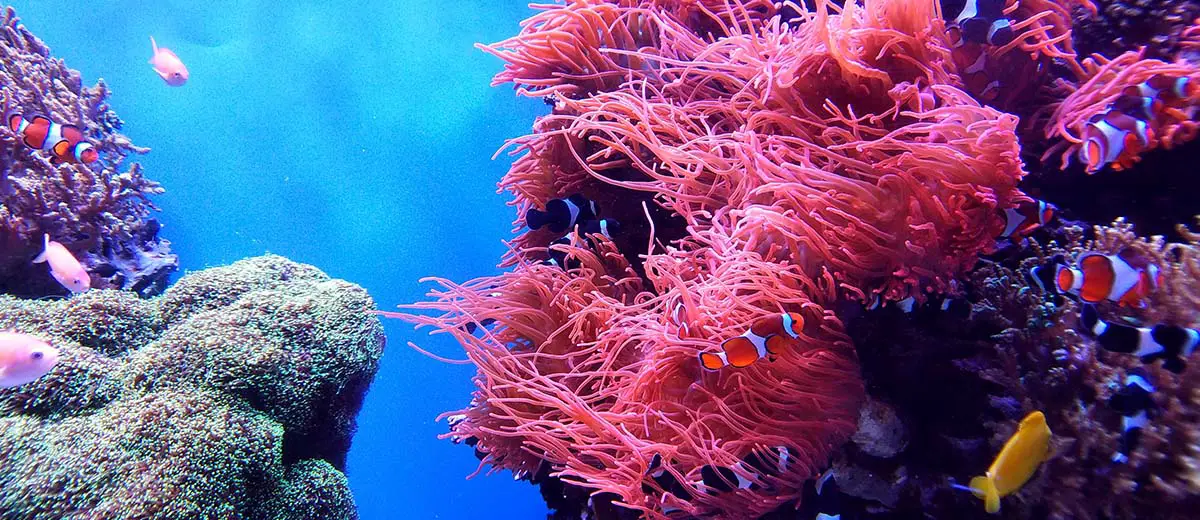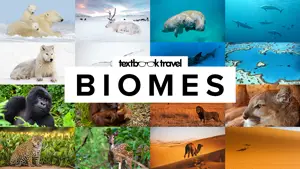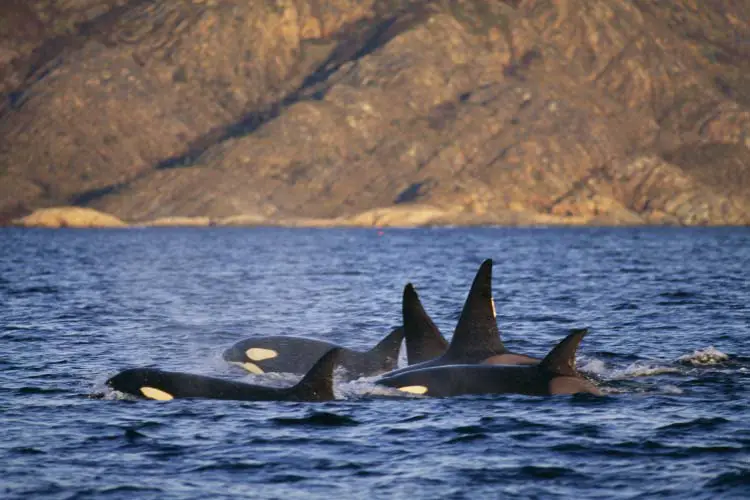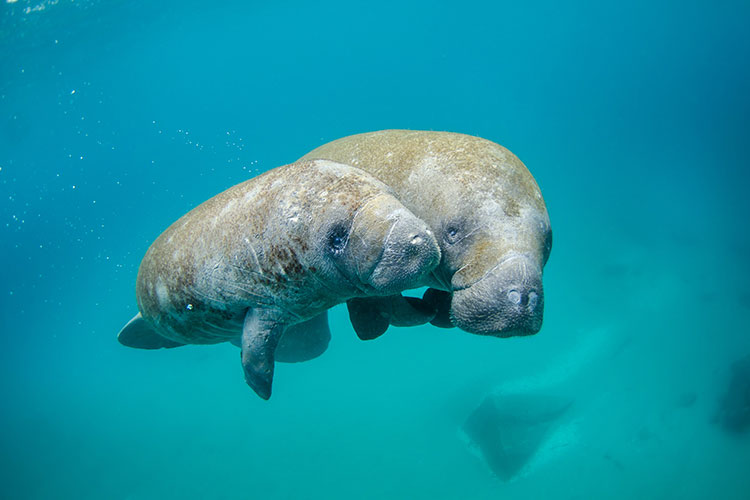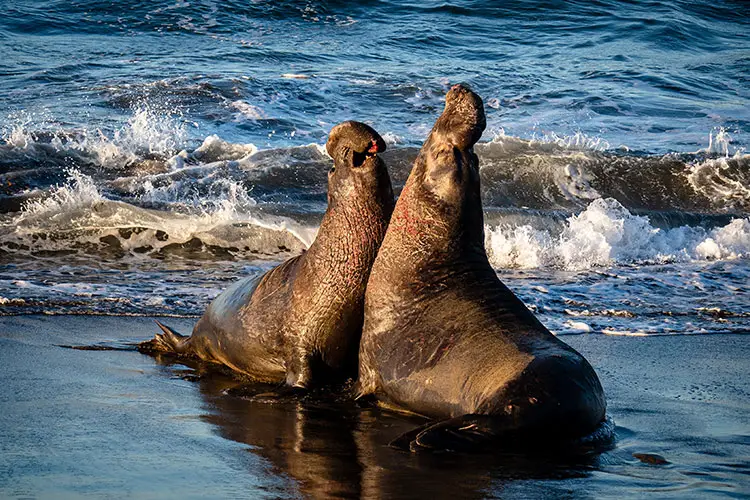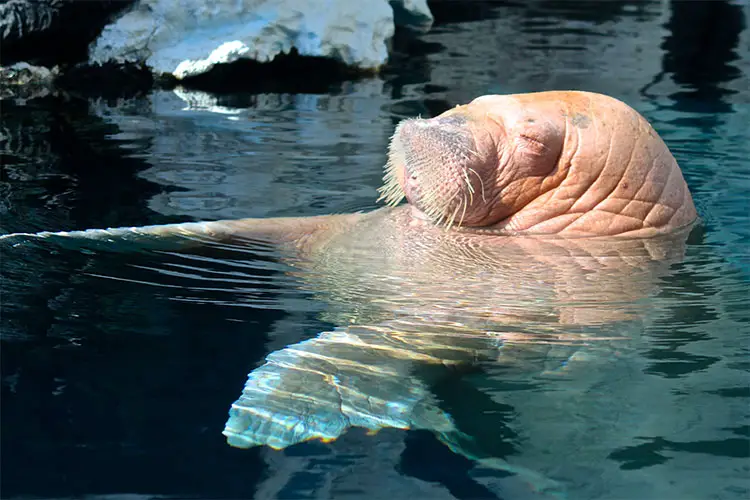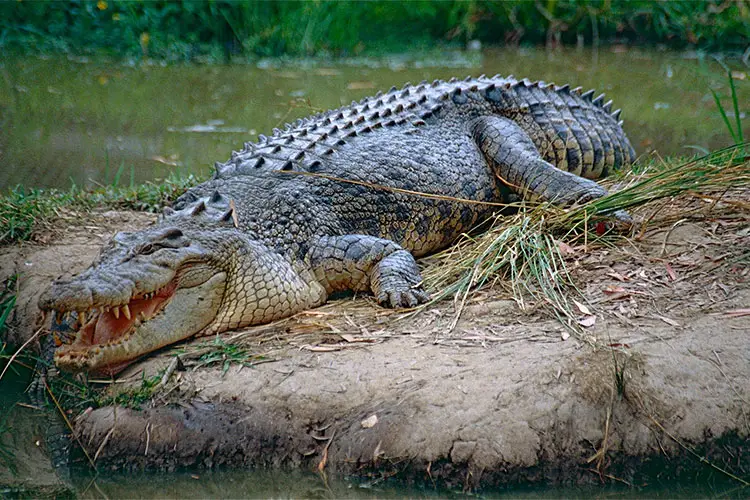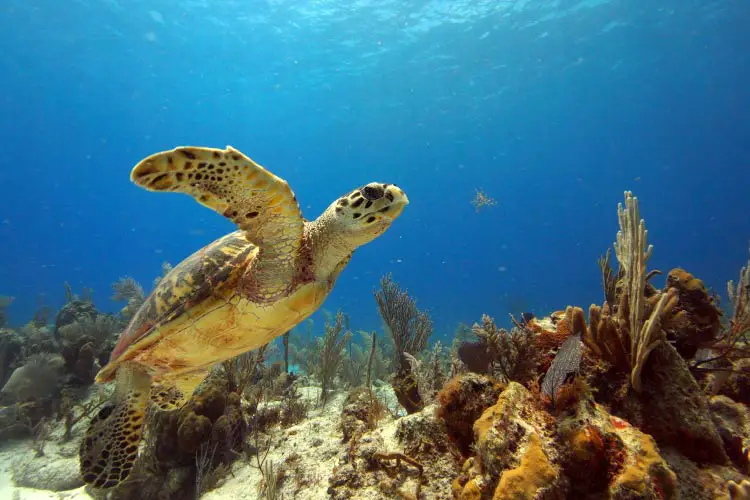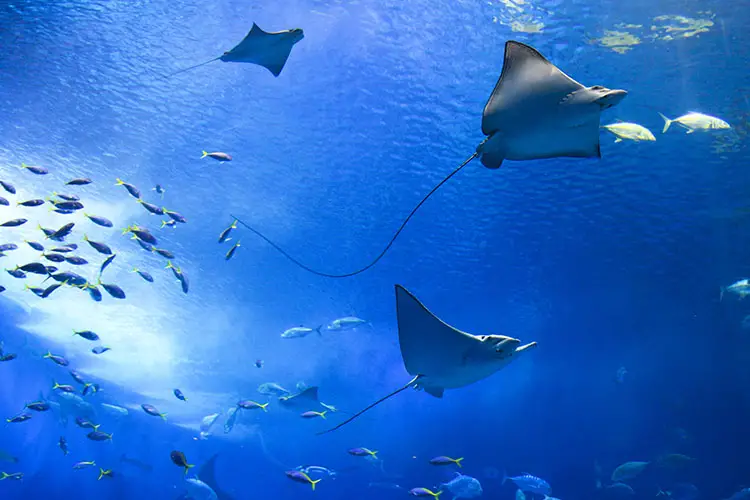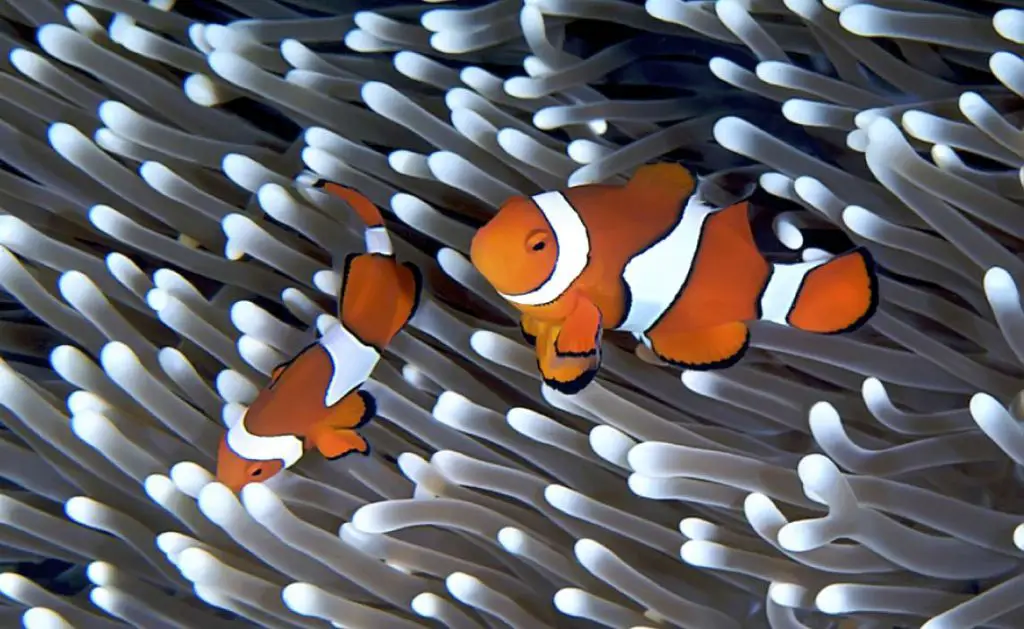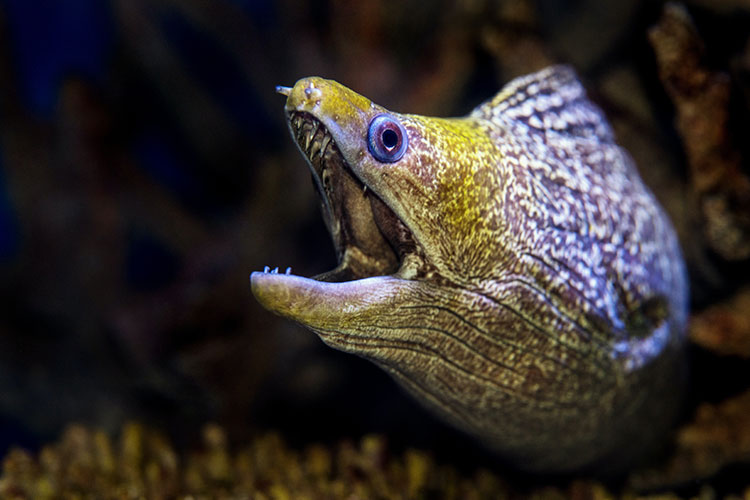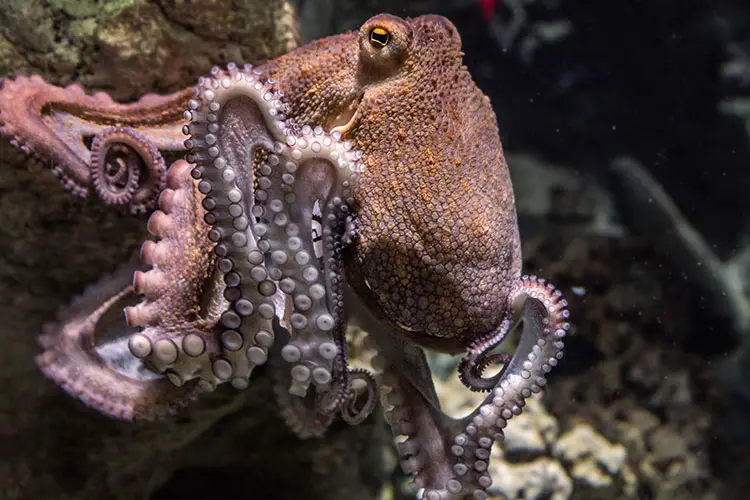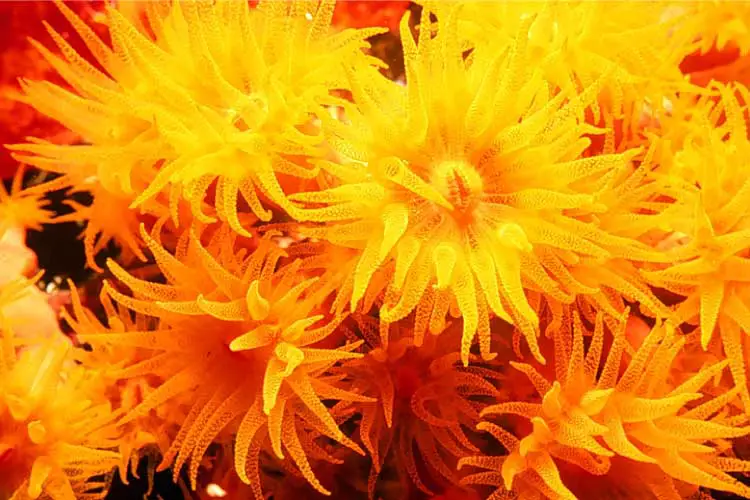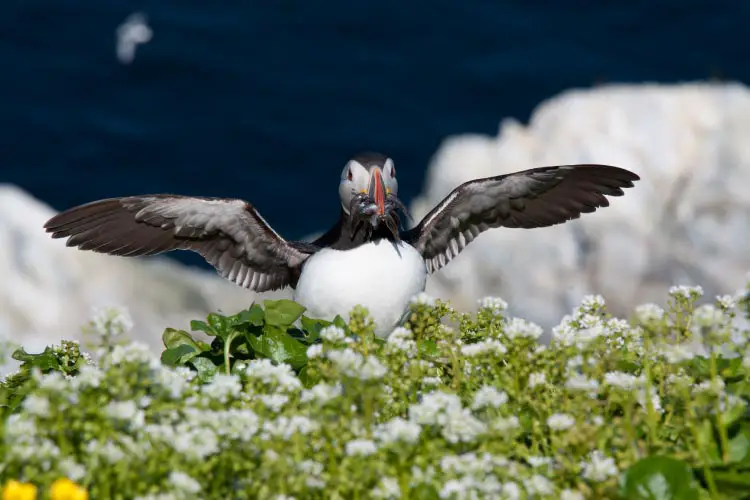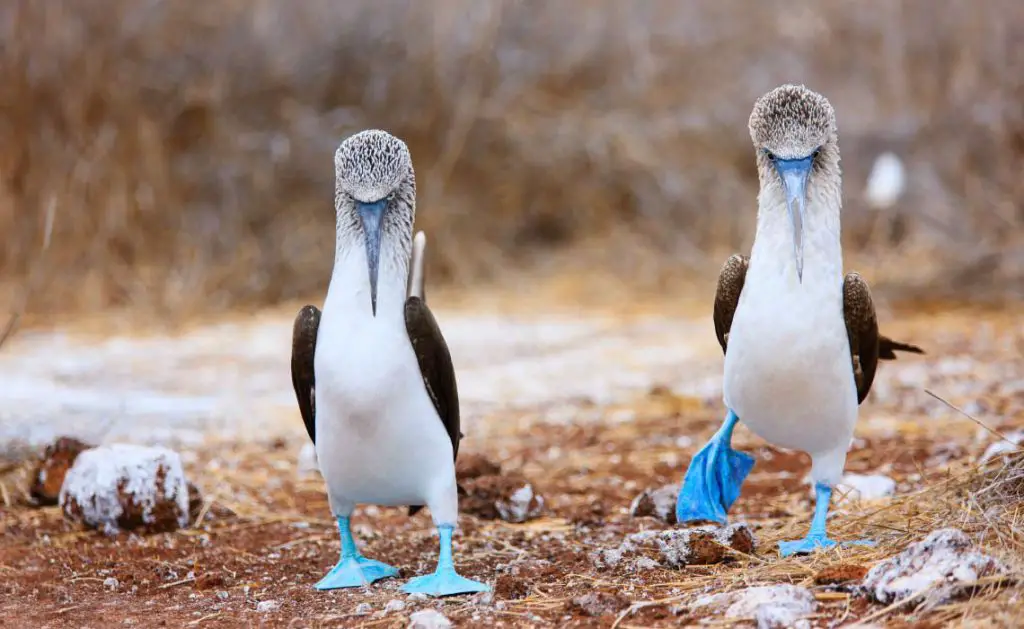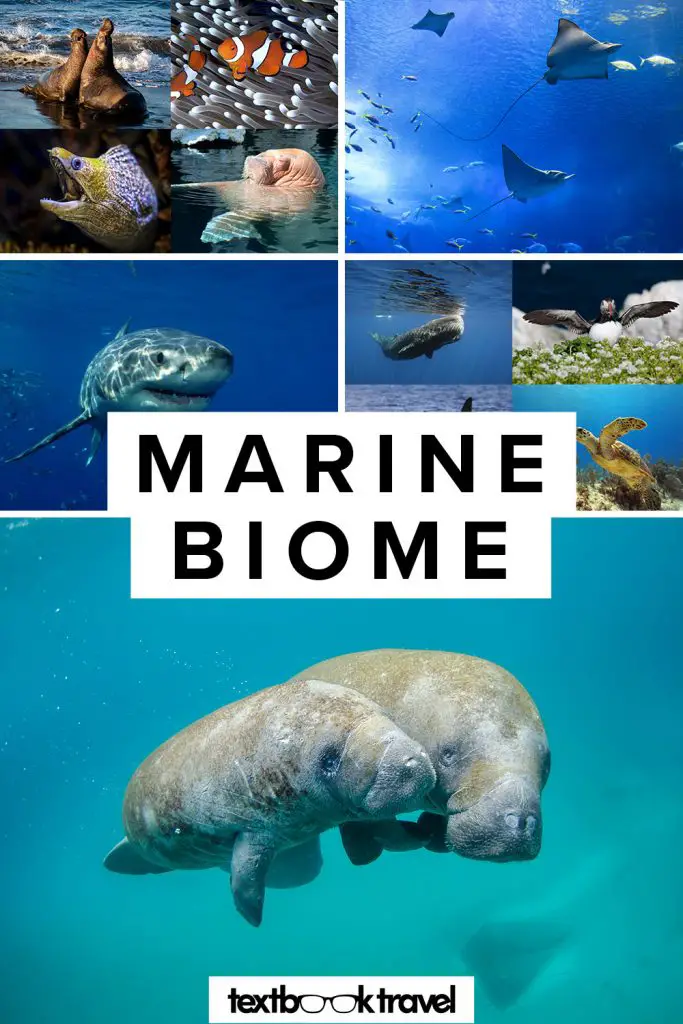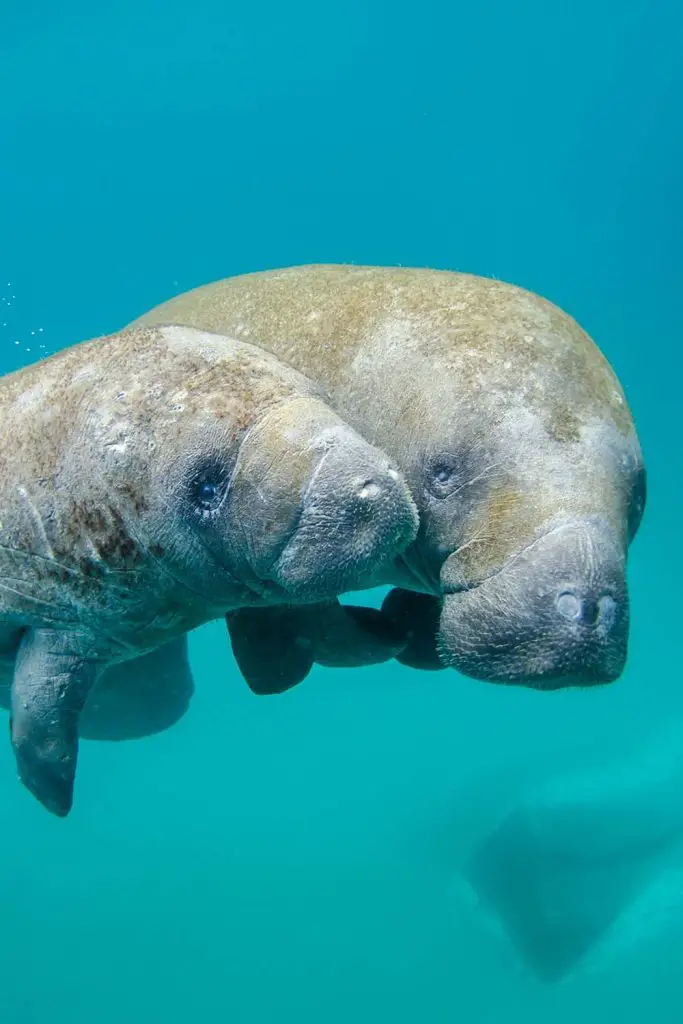Animals of the Marine/Saltwater Biome
By far the largest biome of any on the list, the marine biome is classified as any body of water with a salinity of 0.5ppt or more—the concentration of salt measured in parts per thousand. There are three main types of ecosystem within the marine biome: ocean, coral reef and estuary. Estuaries are bodies of water that form transitional zones between freshwater and saltwater ecosystems; the brackish water found therein has more salt than freshwater but less than seawater. Coral reef ecosystems—also known as the rainforests of the sea—are created by colonies of coral that usually grow in warm, shallow water and play host to an incredible amount of biodiversity. Finally, the open ocean is home to the largest animals on the planet including 200-tonne whales, 2,250kg / 5000lb great white sharks and 500kg / 1000+lb squid.
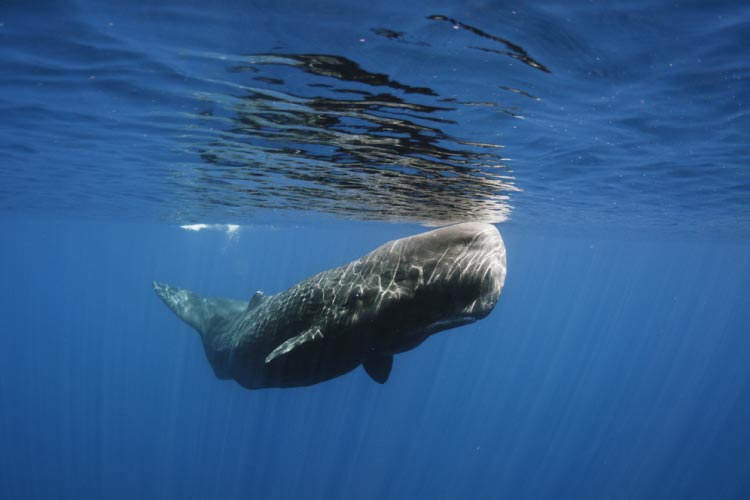
The infraorder cetacea contains most of the well-known aquatic mammals including whales, dolphins and porpoises. Blue whales are the largest animals on the planet and can reach lengths of almost 30m / 100ft. Unlike most whales, who eat fish, plankton and algae, killer whales—also known as orcas—are apex predators who hunt in groups and will prey upon other species of whale, seals and many species of fish. If orcas were the bears of the sea, manatees would be the cows (hence why they’re also known as sea cows!); manatees are herbivorous mammals that eat around 50kg of grasses, algae and weeds each day—around 10-15% of their body-weight.
Left – Group of killer whales in Norway & Right – Mother manatee and calf swimming out of an inlet Unsplash: NOAA
Pinnipedia is another group of marine mammals that contains seals, sea lions & walruses, mostly found in frigid waters outside of the tropics. The southern elephant seal is the largest of this clade—and the largest marine mammal outside of cetacea—weighing in at a hefty 3,200kg / 7,100lbs! These gigantic seals are found only in the water surrounding the Antarctic where they prey on fish and squid at depths of up to 1km / 3,300ft. The walrus is another iconic pinniped species and the second largest overall. They are found on the opposite side of the planet to the elephant seal, in the waters of the Arctic circle where they spend a great deal of their time on land searching for molluscs to eat.
Left – Elephant Seals fighting in the breeding season Unsplash: Anchor Lee & Right – A relaxed walrus! Pixabay: nightowl
Many of the reptiles you’ll find in the freshwater biome can also be found in the marine biome too but much larger. Sea turtles are a superfamily of Cryptodira—a suborder containing most of the world’s tortoises and turtles—and contains species such as the hawksbill, leatherback and green sea turtle. Hawksbills are found in the shallow coral reefs of the tropics where they feed mostly on sea sponges—making up around 70-95% of their diet. Saltwater crocodiles are the largest of the crocodilian order measuring up 6m / 20ft in total length and weighing up to 1,300kg / 2,900lbs. The largest saltwater crocodile ever recorded was found in the Bay of Bengal in 1840, it measured over 10m / 33ft and weighed 2,721.5kg / 5,990lbs, yikes! They are found in the brackish mangrove swamps of southeast Asia and northern Australasia.
Left – Saltwater crocodile | WikiCommons: Bernard Dupont & Right – Hawksbill sea turtle
Fish are divided into three groups: Chondrichthyes, Osteichthyes and the smallest of the three, Agnatha—jawless fish. Chondrichthyes are cartilaginous fishes that have skeletons composed primarily of cartilage, they are mostly marine species and include sharks, rays and skates. The most feared of all Chondrichthyes, the great white shark preys mostly on marine mammals and has no known predators other than the orca. Growing up to 9m / 30ft, the largest of all sharks, the whale shark is much more placid and can be found in the topics feasting on plankton, fish eggs and krill. Batoidea is a superorder of Chondrichthyes more commonly known as the ray family. The manta ray is the largest of this family and, like the whale shark, is also a filter feeder; they are found in tropical waters where they feast on zooplankton.
Left – Great white shark & Right – Group of Manta Rays | Unsplash: Sense Atelier
Osteichthyes are bony fish that have skeletons composed primarily of bone, this group is the most diverse containing over 28,000 species. Many of the fish you’ll see in coral reef ecosystems are bony fish such as parrotfish, the moray eel and clownfish. The moray eel is a carnivorous predator that preys on small fish, octopuses and crustaceans. Made famous in the 2003 film, Finding Nemo, clownfish are a particularly beautiful species of reef fish. They can be found swimming in between the tentacles of sea anemone with whom they have a symbiotic relationship—providing each other with many benefits including protection from predators or parasites. Other examples of bony fish include tuna, swordfish and the gigantic ocean sunfish—the largest of all bony fish, weighing up to 1,000kg / 2,200lbs.
Left – Clownfish swimming in between sea anemone & Right – Moray Eel with powerful jaws | Unsplash: David Clode
The invertebrates of the marine biome range from crustaceans such as lobsters and crabs to jellyfish, cephalopods such as octopus and jellyfish, bivalves such as mussels and oysters, and coral. Octopus have eight limbs—called arms—which they use to walk on the seafloor and forage for food. Each arm is covered in suckers, which they use as grip to either secure their position or to move other objects. Coral is perhaps the most inconspicuous animal in this entire article! Often confused for a plant, coral are marine invertebrates with tentacles, mouths and a digestive system. The Great Barrier Reef is the largest coral reef system in the world, stretching 1,400mi / 2,300km off the northeast coast of Australia.
Left – Octopus with tentacles and suckers | Pixabay: Edmondlafoto & Right – Daisy coral feeding on the Great Barrier Reef, Australia | Flickr: Wibble Roisin
There are many birds that have evolved to thrive in the marine biome, sporting thick feathers and boasting a variety of fishing techniques. Puffins are split into three species, all of which reside in the northern hemisphere; they live in rabbit burrows on the edges of cliffs where they breed and fish for herring, sand eel and capelin. Whereas puffins live in the frigid waters of the north, boobies are found mostly in the tropics. Blue-footed boobies are found on the west coast of Central and South America and sport colourful blue feet which develop thanks to the pigments found in the fish it eats. Other examples of marine birds include albatross, gannets and penguins.
Left – Atlantic Puffin post-fishing in Norway | Flickr: talaakso & Right – Blue-footed booby on the Galapagos Islands
Excuse me! Are you on Pinterest?! Here are a couple of pins! Right: NOAA on Unsplash
